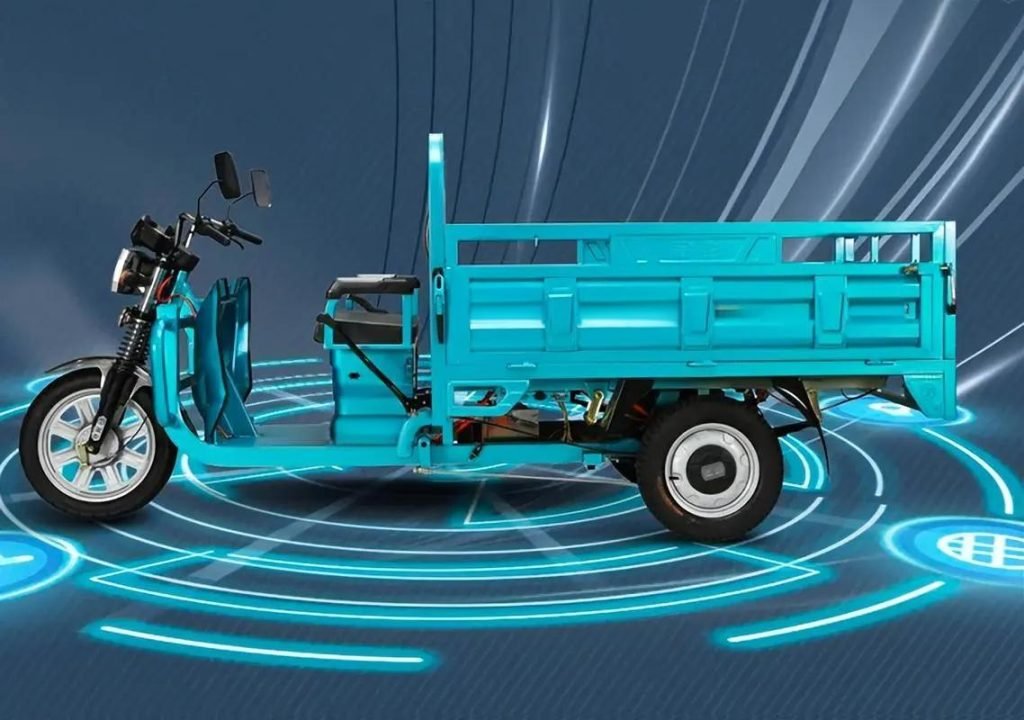In the last two years, more reliance on e-commerce, on-demand services, and urbanization has created tremendous pressure on last-mile delivery networks. Urban roads are getting clogged, and pressure from the environment is compelling logistics players to look for cleaner, leaner options. Among these, the electric cargo tricycle stands out as one of the most practical and lowest-carbon options for last-mile delivery in cities.
Why Electric Cargo Tricycles Are Gaining Popularity
ال دراجة ثلاثية العجلات كهربائية لنقل البضائع is a compact, three-wheeled electric truck for the specific purpose of carrying goods in the city. The electric cargo tricycle has become increasingly popular thanks to the combination of economic, environmental, and practical advantages. The tricycles emit no tailpipe emissions whatsoever, thereby reducing air pollution in densely populated city centers. They consume far less energy compared to conventional delivery vans, which makes them cost-effective in the long run.
Unlike large vans, electric tricycles used to deliver goods have no problem navigating small streets, bypassing traffic jams, and entering pedestrian zones closed off to conventional delivery trucks. Such flexibility allows logistic firms to more consistently stick to schedules during peak hours.
Eradicating Last-Mile Delivery Issues
Last-mile delivery is usually the most logistically complicated and expensive part of the supply chain. It is congested with access restriction zones and high-density delivery environments, making it difficult for big vehicles to reach. The electric tricycle has a strategic advantage in this regard. It is quiet and small, and it can deliver goods to doorsteps without disrupting customers.
For example, when delivering in inner city locations where delivery is obstructed by restricted parking spaces and vehicle availability, battery tricycles delivering loads can park closer to points of delivery, thereby reducing drivers’ walking distances and overall process time. This automatically improves efficiency and customer satisfaction.
Environmental and Economic Impacts
The greatest benefit of the electric cargo tricycle can affect sustainability goals. By having the capability of replacing diesel vans with electric ones, companies can subsequently minimize their carbon footprint and comply with tighter environmental policies. For cities attempting to reduce greenhouse gas emissions, mass use of electric tricycles could be a lifesaver.
The electric tricycles also have lower maintenance costs than traditional combustion-fueled trucks. They also have fewer moving parts, which translates to lower repair bills and fewer minutes lost during downtime. Secondly, electricity by the kilometer is lower in cost compared to fuel, and that provides a better definition of cost-effectiveness for delivery.
Enhancing Operational Effectiveness
Apart from cost savings, electric cargo tricycles improve operational efficiency in some ways. They can be used in fleets to make deliveries in high-density locations with fewer large trucks required. This means instead of one van taking many stops in a spread-out area, several tricycles are deployed at once, each handling a small delivery area more efficiently.
For perishable goods such as meal or grocery deliveries, freshness, and speed are of the essence. The electric cargo tricycle can cut through traffic and deliver the deliveries faster. Insulated or refrigerated cargo bays are a standard feature on many of these models, which could be ideal for temperature-controlled deliveries.
Improving Urban Livability
Apart from business advantage, دراجة ثلاثية العجلات كهربائيةs also enhance the city’s livability. They are silent, thus reducing noise pollution in residential zones. Their small size also takes up less space on the road, decongests the road, and enhances pedestrian and cyclist safety. For the city destination having heritage landmarks or having narrow roads, the vehicles offer a delivery alternative that is not at the expense of the area’s accessibility or integrity.
Integration with Modern Logistics Systems
Today’s logistics are highly reliant on route optimization and real-time monitoring. GPS, telematics, and clever routing software are pre-loaded in most electric cargo tricycles today, such that the dispatcher can see their location, battery, and delivery status. These technologies, when used together, enable fleets to operate at optimal efficiency and even change routes depending on traffic or weather.
Moreover, since micro-distribution hubs—small warehouses near the customer base—are gaining popularity, electric cargo tricycles can be the last leg of the delivery between such hubs and the final consumer. This not only cuts down city-centre kilometres but also increases delivery speed.
A Greener Urban Delivery Future
As urban populations grow, so too will last-mile delivery infrastructure demands. Urban logistics firms and cities must work together to create solutions for delivering efficiency, cost, and sustainability objectives. The electric cargo tricycle is the best vehicle for this vision; it can accommodate most small- and medium-sized deliveries, has the agility necessary to maneuver in the urban environment, and the eco-appeal required by today’s regulations.
As the technology improves with batteries, charging times and ranges are improving rapidly, rendering electric tricycles increasingly more convenient for day-to-day use. Governments and cities then begin to offer incentives to switch over, encouraging companies to switch over even further.
خاتمة
The electric cargo tricycle not only serves as a replacement delivery vehicle but a revolutionary tool for clean urban logistics. With higher efficiency, lower environmental impact, and a higher overall urban livability, it is central to transforming the last-mile delivery market. With more businesses turning to دراجات ثلاثية العجلات كهربائية لنقل البضائع, cleaner skies, quieter roads, and faster deliveries will usher in a wiser and cleaner city mobility future.
